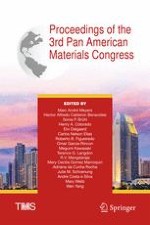2017 | Buch
Proceedings of the 3rd Pan American Materials Congress
herausgegeben von: Marc André Meyers, Dr. Hector Alfredo Calderon Benavides, Dr. Sonia P Brühl, Dr. Henry A Colorado, Dr. Elvi Dalgaard, Dr. Carlos Nelson Elias, Dr. Roberto B Figueiredo, Dr. Omar Garcia-Rincon, Dr. Megumi Kawasaki, Prof. Terence G. Langdon, Dr. R.V. Mangalaraja, Mery Cecilia Gomez Marroquin, Dr. Adriana da Cunha Rocha, Julie M Schoenung, Dr. Andre Costa e Silva, Prof. Mary Wells, Dr. Wen Yang
Verlag: Springer International Publishing
Buchreihe : The Minerals, Metals & Materials Series
